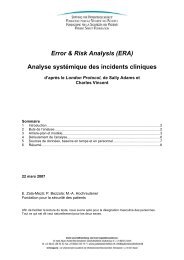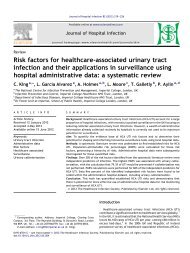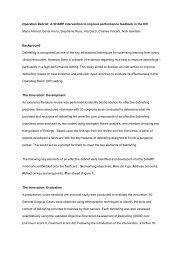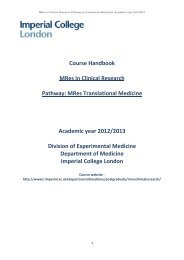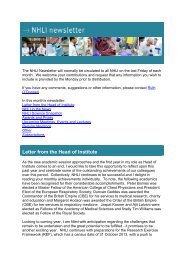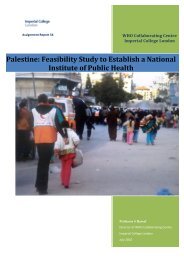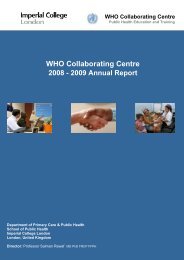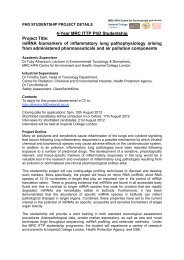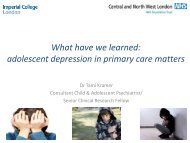QOF Plus Year 1 - Imperial College London
QOF Plus Year 1 - Imperial College London
QOF Plus Year 1 - Imperial College London
Create successful ePaper yourself
Turn your PDF publications into a flip-book with our unique Google optimized e-Paper software.
Priority and relevance to national policyThere is a considerable body of national policy documentation related to smoking, reflecting itsimportance as a key priority area for the Government and for the NHS. This includes the tobaccowhite paper ‘Smoking Kills’, the public health white paper, ‘Choosing Health’ and the white paper‘Our Health, Our Care, Our Say’. Since 2004, the General Medical Services contract for generalpractice (the Quality and Outcomes Framework) has awarded points for recording patients’smoking status and providing cessation advice or referrals. In his final report of the NHS NextStage Review (2008), Lord Darzi listed the reduction of smoking rates as one of the key goals forprimary care trusts to address when “commissioning comprehensive well-being and preventionservices, in partnership with local authorities…” The government’s Public Service Agreement forSmoking states a goal of reducing adult smoking rates (from 26% in 2002) to 21% or less by 2010,with a reduction in prevalence among routine and manual groups (from 31% in 2002) to 26% orless (DoH, 2004). Key performance indicators related to smoking are incorporated into theHealthcare Commission targets for acute trusts and for PCTs.Prevalence of conditionIn 2006, 24% of people aged 16 and over in England smoked (Lader, 2007). Among those inroutine or manual occupations, the prevalence in 2005 was 29% (Goddard, 2006). Smokingprevalence is also high among some minority ethnic groups (Erens et al. 2000).Associated morbidity and mortalitySmoking remains the main cause of preventable morbidity and premature death in England,leading to an estimated annual average of 86,500 deaths between 1998 and 2002 (Twigg et al.2004). It is estimated to cost the NHS £1.5 billion a year (Parrott et al. 1998). Smoking has beenidentified as a causal factor in cancers, respiratory diseases, coronary heart and other circulatorydiseases, stomach and duodenal ulcers, erectile dysfunction and infertility, osteoporosis,cataracts, age-related macular degeneration and periodontitis (US Department of Health andHuman Services 2004). Following surgery, smoking contributes to lower survival rates, delayedwound healing and post-operative respiratory complications (US Department of Health andHuman Services 2004). Smoking during pregnancy incurs specific risks to both mother and foetusand is the focus of a separate indicator set ( see Smoking in Pregnancy, Chapter 6, page 39).Passive smoking is also associated with risks including exacerbation of respiratory symptoms andtriggering asthma attacks as well as increasing the risk of lung cancer, respiratory illnesses(especially asthma), heart disease and stroke (NICE, 2008; International Agency for Research onCancer 2002; Scientific Committee on Tobacco and Health 2004; US Environmental ProtectionAgency 1993).34



